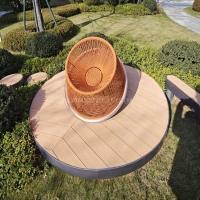Welcome to the website for landscape facilities products and knowledge.
How does the bin’s design ensure compatibility with waste diversion initiatives?
Modern waste bin designs play a pivotal role in supporting waste diversion initiatives by incorporating features that encourage proper waste segregation and recycling. Smart compartmentalization allows users to easily separate recyclables, organic waste, and general trash, reducing contamination in recycling streams. Many bins now include color-coding, clear labeling, and even sensor technology to guide users toward correct disposal habits.
Eco-conscious materials like recycled plastics or biodegradable composites are increasingly used in bin manufacturing, aligning with circular economy principles. Some advanced designs integrate compacting mechanisms to maximize capacity while minimizing collection frequency, lowering carbon emissions from waste transportation.
Urban areas are adopting solar-powered smart bins with fill-level sensors that optimize collection routes, while public spaces feature vandal-resistant designs that maintain functionality. Home bins now often include odor-control systems and ergonomic features to make sustainable waste management more convenient.
These design innovations directly support municipal waste diversion goals by making recycling intuitive, reducing landfill dependency, and fostering long-term behavioral change toward sustainable waste practices. The synergy between thoughtful bin design and waste policy creates a foundation for achieving higher recycling rates and environmental targets.
Related search:

Recommendation
Swivel chair-Specialty steel structure woven rattan leisure chair with rotatable design